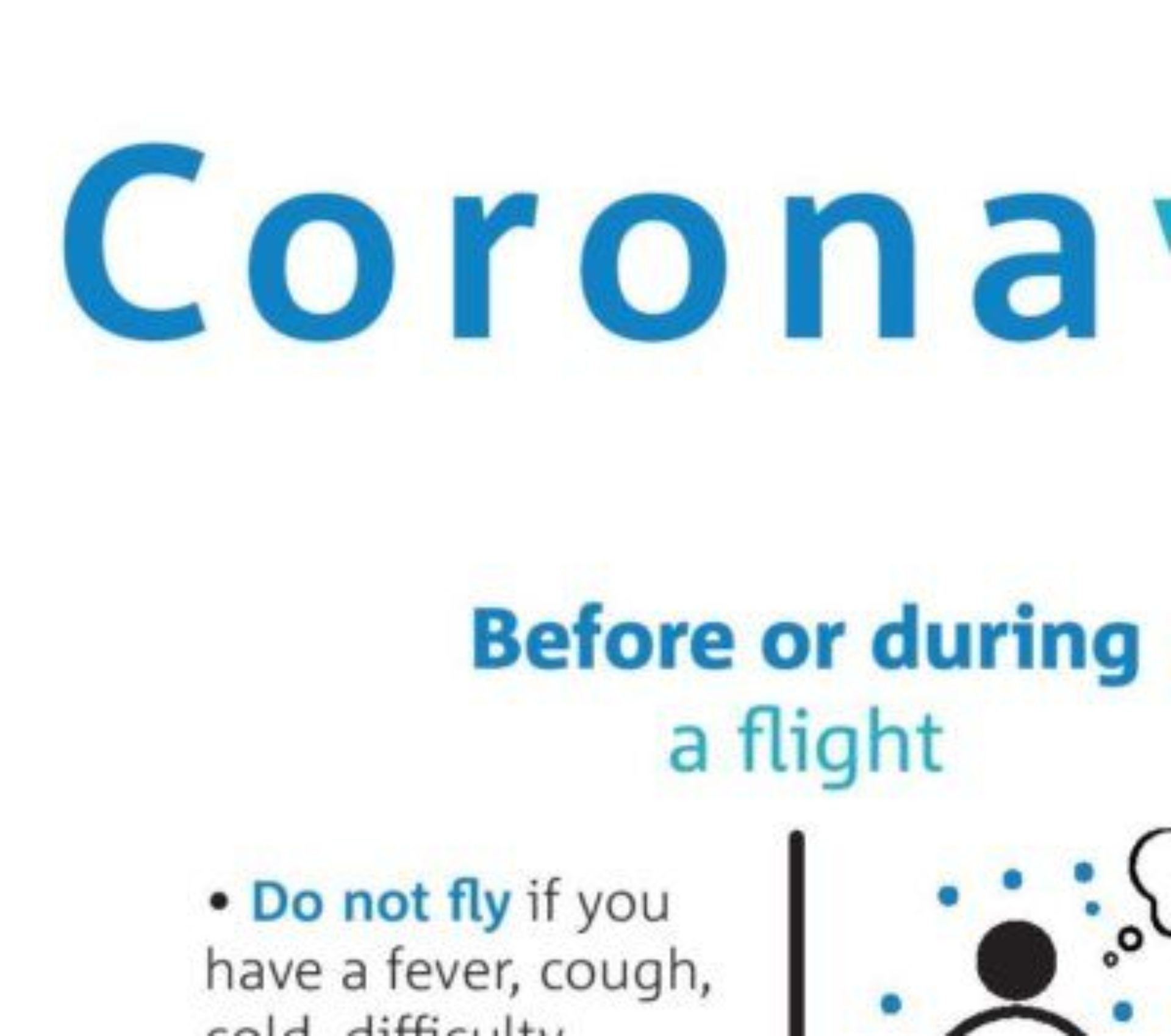Updated operational recommendations for operators on the COVID19 outbreak
The European Business Aviation Association (EBAA) is closely monitoring developments related to the Coronavirus or COVID-19 outbreak.
Today, the European Aviation Safety Agency (EASA) has issued a revised Safety Information Bulletin outlining recommendations for operators to reduce the risk of COVID-19 spreading.
EASA is monitoring developments related to the outbreak and is actively engaged with the WHO, ICAO, the European Commission (EC) and the EC DG SANTE. Accordingly, the latest guidance and recommendations issued by WHO, ECDC and ICAO should be considered in the context of this SIB.
Important to note in this SIB
Aircraft operators and aerodrome operators should collaborate as much as possible:
- With the public health authorities by providing support in passenger tracing and epidemiological investigation in the event of flights where the COVID-19 has been confirmed. Additionally, aircraft operators and aerodrome operators are encouraged to be proactive and establish contact with public health authorities prior to encountering a suspected case.
- Between themselves, to ensure that passengers are not kept on board of an aircraft without proper ventilation for longer than 30 minutes.
Operational Recommendations
EASA draws the aviation community’s attention to information and guidelines provided by the WHO, ECDC, ICAO, International Air Transport Association (IATA) and Airports Council International (ACI). In particular, the WHO recommendations for public health authorities and the transport sector, including operational recommendations for the case of passengers presenting symptoms compatible with an acute respiratory infection.
Aircraft and aerodrome operators should;
- Provide information to crew members and aerodrome staff regarding the management of a case with acute respiratory infection on board an aircraft.
- For crews required to lay-over in an affected area (see Note 2 below), aircraft operators should provide the necessary information and materials as recommended by the local authorities for their inhabitants.
- Note 2: Affected areas are considered to be in the PRC and other areas where possible ongoing community transmission of the COVID-19 infection has been confirmed without the history of travel to the PRC, in accordance with the latest Situation Report as published by WHO.
- Aircraft operators performing passenger flights to or from the affected areas (see Note 2 above) should be equipped with one or more Universal Precaution Kits (UPKs). Such kits may be used to protect crew members who are assisting potentially infectious cases of suspected COVID-19 and in cleaning up and correctly discarding any potentially infectious contents.
- Aircraft operators and aerodrome operators should make readily available hand disinfectant solutions in the lavatories and waiting rooms to be used by their passengers and employees.
- Aircraft operators should encourage their staff and crew members to identify passengers meeting the following criteria: having signs and symptoms indicative of acute respiratory infections, and having been in the affected areas or in contact with people potentially infected with COVID-19 or with people arriving from an affected area within 14 days prior to onset of symptoms.
In the event of such a symptomatic passenger being identified, the crew should;
- use the health part of the aircraft general declaration to register the health information on-board and submit it to the Point of Entry health authorities when required by a State’s representative;
- report to the destination aerodrome that they have on board a passenger presenting symptoms suggestive of COVID-19 and follow the instructions received;
- ask the passengers to fill in the passenger locator card (PLC) forms in order to collect information (see Note 3 below) regarding the passengers’ position in the aircraft as well as other information regarding their immediate travel plans and contact details. The information is intended to be held by public health authorities in accordance with applicable law and is to be used only for authorized public health purposes.
- Note 3: For an aircraft where the deck is divided in sections using rigid separation walls, the priority is to collect the PLC from all the passengers sitting in the same sections with the suspected case and from the ones using the same lavatory facilities that may have been used by the suspected case.
- provide a medical facemask for the symptomatic passenger in order to reduce the risk of spreading the potential COVID-19 infection and try to minimize the contact between the suspected passenger and cabin crew members and the other passengers. If a facemask is not available or cannot be tolerated, ask the sick person to cover their mouth and nose with tissues when coughing or sneezing. In addition, where possible, the individual air supply nozzle for the symptomatic passenger should be turned off in order not to exacerbate the spread of droplets;
- recommend to the passengers to self-report if feeling ill, and if they meet the criteria mentioned above; and
- follow the basic principles to reduce the general risk of transmission of acute respiratory infections as presented by WHO in their Travel Advice.
Aircraft operators should consider increasing the frequency of the aircraft cleaning, especially for aircraft operating to/from affected areas. For this purpose, the aircraft operators and their suppliers should use cleaning substances, approved for aviation use, which were proven efficient during the previous SARS and MERS coronavirus outbreaks. Furthermore, proper consideration should be given, in this context, to the ECDC interim guidance for environmental cleaning in non-healthcare facilities exposed to SARS-CoV-2.
Aircraft operators and aerodrome operators should follow the specific guidelines provided by EASA partners for the event of suspected communicable disease, including the advice provided by EU Healthy Gateways.
EBAA will provide further updates as appropriate.



